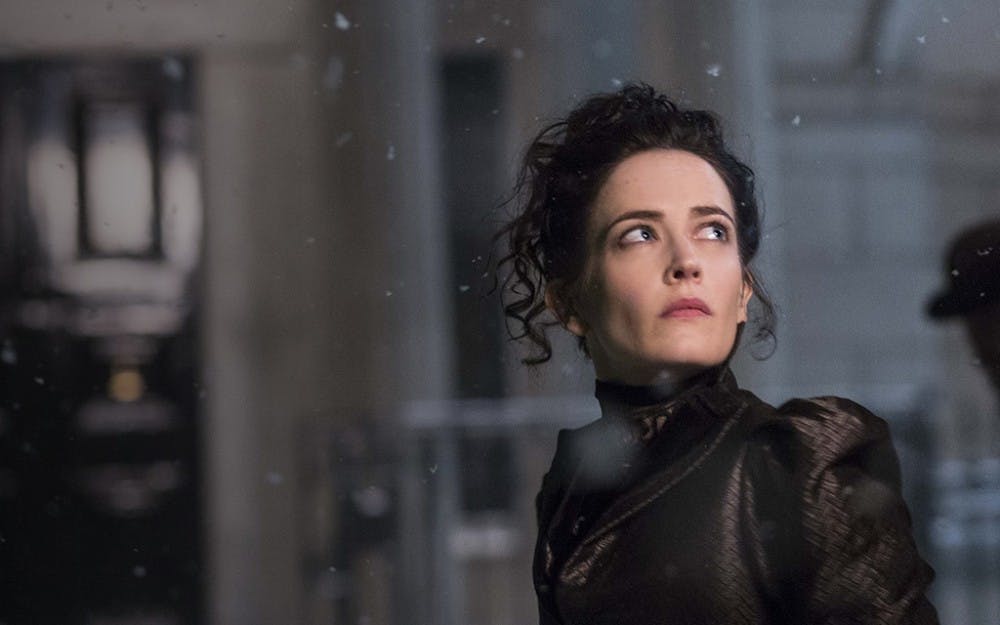“Penny Dreadful,” which recently finished its second season, has many strengths. It has strong production values and a versatility unique to the Victorian horror genre to which it ostensibly belongs. But the greatest strength “Penny Dreadful” possesses is in showcasing some of the best, most complex female characters on television.
As creator John Logan recently said to Entertainment Weekly, “This (Penny Dreadful) has always been a story about Vanessa Ives.” Ives is a Catholic woman with supernatural abilities pursued by the devil so he can marry her and bring about the apocalypse. It is not necessarily essential for a TV series to have a female protagonist in order to have progressive representations of women, but it is a good starting place.
There are few female protagonists on TV who are as complex as Ives. She is smart, flawed, scary and even funny, fitting not one archetype, but several.
It is noteworthy that the desires fueling her actions — saving a friend, taking revenge on the man who killed her mentor — are rarely motivated by a need to please a man, but rather to please herself. Critic Laura Bogart notes most female action heroes’ “bad-assery must be in the service of a greater good.” Some of Ives actions have occurred out of a desire to help her friends, but her journeys to help them almost always result in Ives becoming more empowered.
In an article about “Gone Girl,” Bogart writes about the fact our culture praises strong female heroes but does not allow for complex female villains who put the “villain” in “villainous.” She correctly writes “we need dangerous women on-screen.” “Penny Dreadful” often seeks to remedy that situation in the form of various unique antagonists.
This tradition began in season one with the reveal Mina Harker was an evil vampire. Her screen time was brief, but her rejection of what society and her father wanted her to be and and her own autonomous choice between good and evil was empowering, even if she chose evil.
The main female villain for season two raised the stakes even beyond Harker. Helen McCrory plays the seductive and frightening Evelyn Poole, the leader of a satanic witch coven, so well she is scarier than any of the vampires in season one.
The secondary female villain of this season is Hecate Poole, Evelyn’s daughter. She is a bit less distinctive than her mother, but she has all of her grandeur when she puts her mind to it. Her final appearance in season two gives the impression Logan has more plans for her in the future, which seems exciting.
The last female villain introduced in this season was the most unexpected. The unlucky Brona Croft, renamed Lily Frankenstein and brought back to life by the Doctor of the same surname, revealed incredible depths of pain and evil. Her long monologues and ice-cold stares immediately revitalized the character and made her a formidable adversary for whomever will stand in her path.
“Penny Dreadful” is at its best when it focuses on its women. One of its best and most critically praised episodes — “The Nightcomers” — was essentially a triangular conflict between three women who embody the archetypes of protagonist, mentor and antagonist. It was riveting not just because of its singular focus, but because of the excellent performances which brought these psychologically complex and competent women to vivid life.
Bertolt Brecht writes, “Art is not a mirror held up to reality but a hammer with which to shape it.” Nobody should have to undergo the trials of Ives or be as evil as either of the Poole women. But their assertiveness, complexity and vibrance should hopefully inspire women to use their strength to better their lives. At the very least, let’s hope the women of “Penny Dreadful” will be as complex and strong in the third season as they were in the first two.
Jessie Pasternack




